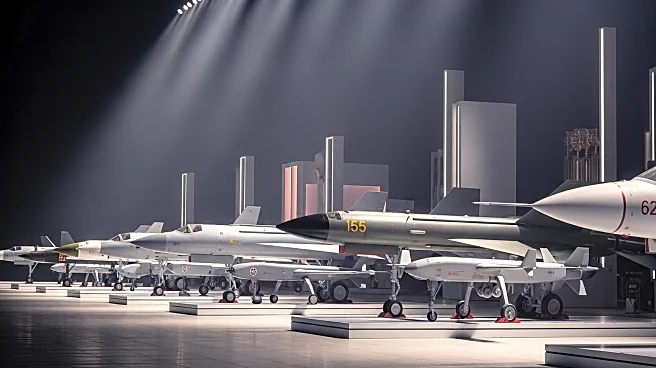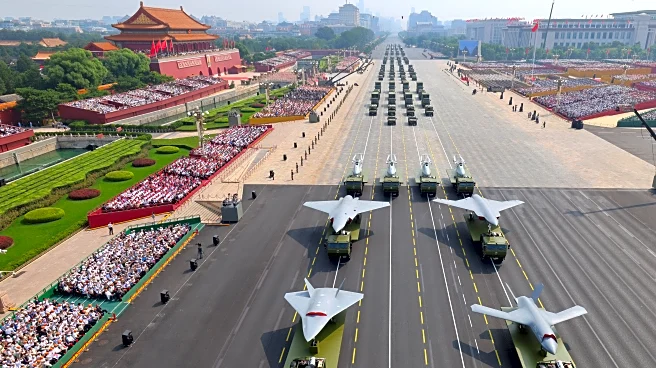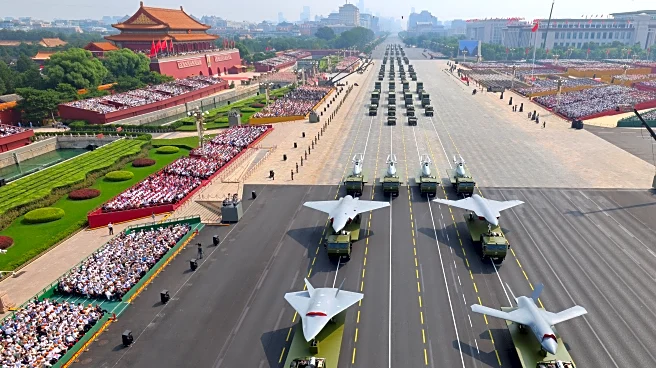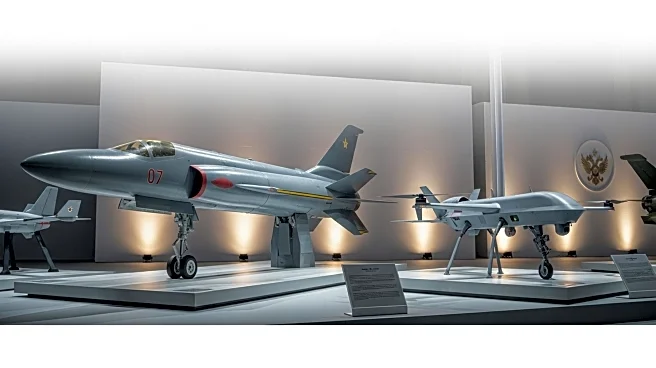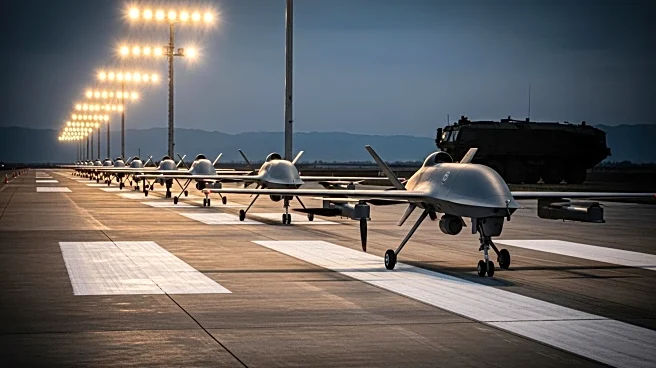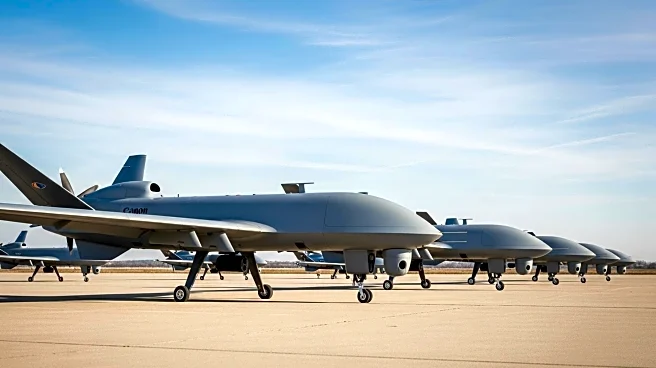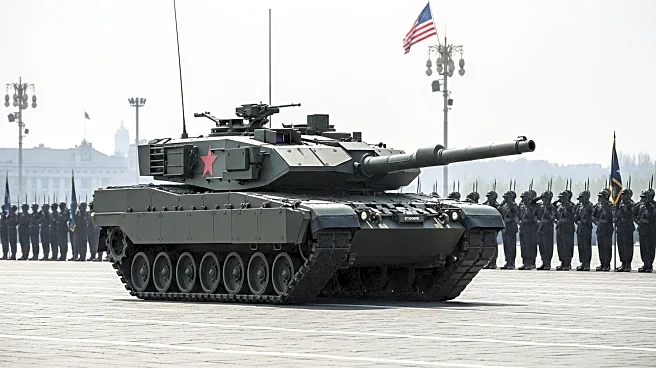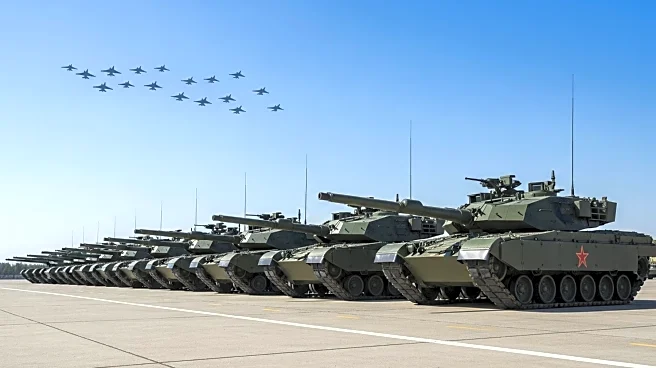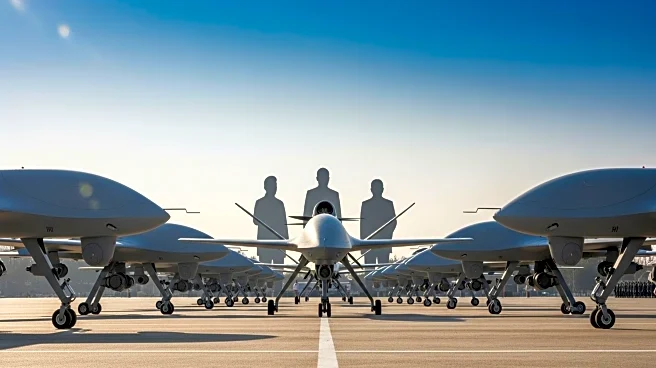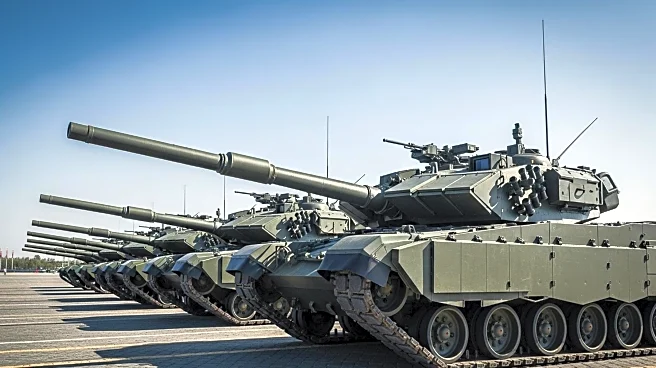What's Happening?
China held a military parade in Beijing to commemorate the 80th anniversary of the end of World War II, showcasing its latest military hardware. The parade featured new missiles, drones, and other high-tech equipment as part of China's modernization program aimed at enhancing its nuclear and conventional capabilities. Notable displays included the DF-61 intercontinental ballistic missile and the DF-5C silo-based missile, both capable of carrying multiple warheads. The parade also introduced anti-ship missiles such as the YJ-15, YJ-17, YJ-19, and YJ-20, which are hypersonic and difficult to intercept. Additionally, reconnaissance and attack aerial drones were presented, along with submarine drones designed for naval combat.
Why It's Important?
The parade highlights China's growing military capabilities and its strategic focus on deterrence, particularly in the Asia-Pacific region. The display of advanced weaponry is a signal to the United States and other regional powers, emphasizing China's ability to defend its interests, including its claims over Taiwan. The development of hypersonic anti-ship missiles poses a challenge to U.S. naval power, potentially affecting the balance of military power in the region. China's expanding nuclear arsenal and indigenous military technology underscore its ambition to become a dominant global military force.
What's Next?
China's military advancements may prompt strategic recalibrations by the United States and its allies in the Asia-Pacific region. The U.S. may need to enhance its missile defense systems and reconsider its naval strategies to counter China's growing capabilities. Diplomatic tensions could rise as China continues to assert its military presence, particularly concerning Taiwan. The international community will likely monitor China's military developments closely, assessing their implications for regional security and global stability.
Beyond the Headlines
China's military parade reflects broader geopolitical shifts, with implications for global security dynamics. The emphasis on indigenous military technology suggests a move away from reliance on foreign systems, indicating a long-term strategy for sustainability in potential conflicts. The parade also serves as a domestic propaganda tool, reinforcing national pride and support for the government's military policies. The international response to China's military advancements will be crucial in shaping future diplomatic and security engagements.
